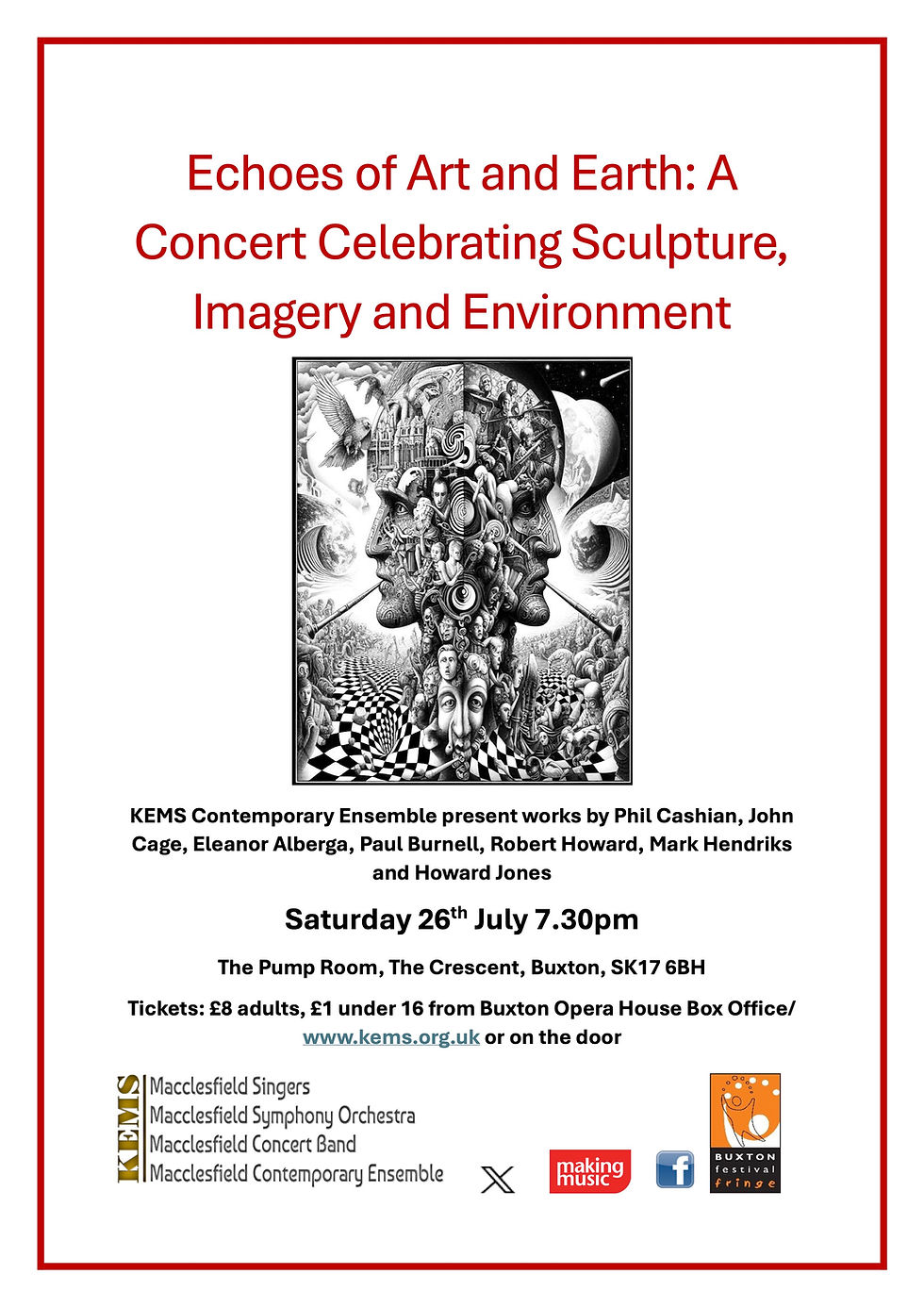Graphene Machine - a piece inspired by a pencil
- Paul Burnell
- Feb 21, 2021
- 2 min read
'Graphene Machine' was written in 2021 and now available from Sheet Music Plus.
It is written for instruments in four parts with optional drum set. It has a duration of around 5 minutes.
Graphene Machine is suitable for multiple quartet combinations with parts available (and potential instrumentations suggested) as follows:
Part 1: C, Bb, Eb
(Flute, Oboe, Alto Recorder, Eb Clarinet, Bb Clarinet, Trumpet, Violin 1)
Part 2: C, Bb, G, Eb
(Alto Flute, Oboe, Tenor Recorder, Bb Clarinet, Alto Saxophone, Trumpet, Violin 2)
Part 3: C, Bb, Eb, F
(Bb Clarinet, Bass Recorder, Alto Saxophone, F horn, Violin 3, Viola)
Part 4: C, Bb, F
(Bassoon, Great Bass Recorder, Tenor Saxophone, F Horn, 'Cello)
Optional: Drum Set -
Kick Drum or damped Floor Tom, Snare Drum, High Hat, Crash Cymbal, Ride Cymbal
Alternately, 'found' percussion object equivalents may be played.
Part 4 may be played an octave lower than written - using the available 'Bass clef up 8' part.
Any other appropriate instruments, even if not suggested above, may play.
The Con Sord./Mute indications are for string and brass instruments.
The optional unpitched air sounds notated with x note heads can be performed on wind and brass instruments. Other instrument types may improvise an equivalent unpitched sound.
Bracketed note heads indicate alternate note where the associated unbracketed note is out of range.
Programme note:
Graphene is a form of carbon consisting of sheets just one atom thick, with the atoms arranged in a honeycomb-shaped lattice. In relation to its thickness, it is about 100 times stronger than steel. Graphene conducts heat and electricity very efficiently and is nearly transparent.
Graphene has likely been unknowingly produced in small quantities for centuries, through the use of pencils and other similar applications of graphite. It was originally observed in electron microscopes in 1962. The material was later rediscovered, isolated and described by Andre Geim and Kostya Novoselov. Their work resulted in being awarded the Nobel Prize in Physics in 2010 "for groundbreaking experiments regarding the two-dimensional material graphene."
Many people may have unknowingly created graphene on a very small scale when they last used their pencils - turning the graphite in their pencil tips into graphene as they wrote ‘to do’ lists. Musicians often make extensive use of pencils whilst they compose or when they add markings to their printed music and so may be one of the largest groups of unwitting graphene manufacturers.
Another comparison is that musicians often find themselves joining their printed paper sheet music with sticky tape. Andre Geim and Kostya Novoselov used sticky tape as part of their experiments to separate graphite fragments repeatedly, thereby leading to graphene being isolated.
'Graphene Machine' reflects Graphene's characteristic of extreme thinness and relative strength through the contrast of quiet delicate sounds with forceful dynamic playing. The piece also features interlocking six-note patterns that were inspired by Graphene's hexagonal atomic structure.





Comments